Input interpretation

E-caprolactone
Chemical names and formulas
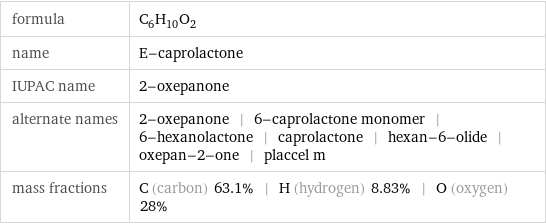
formula | C_6H_10O_2 name | E-caprolactone IUPAC name | 2-oxepanone alternate names | 2-oxepanone | 6-caprolactone monomer | 6-hexanolactone | caprolactone | hexan-6-olide | oxepan-2-one | placcel m mass fractions | C (carbon) 63.1% | H (hydrogen) 8.83% | O (oxygen) 28%
Lewis structure
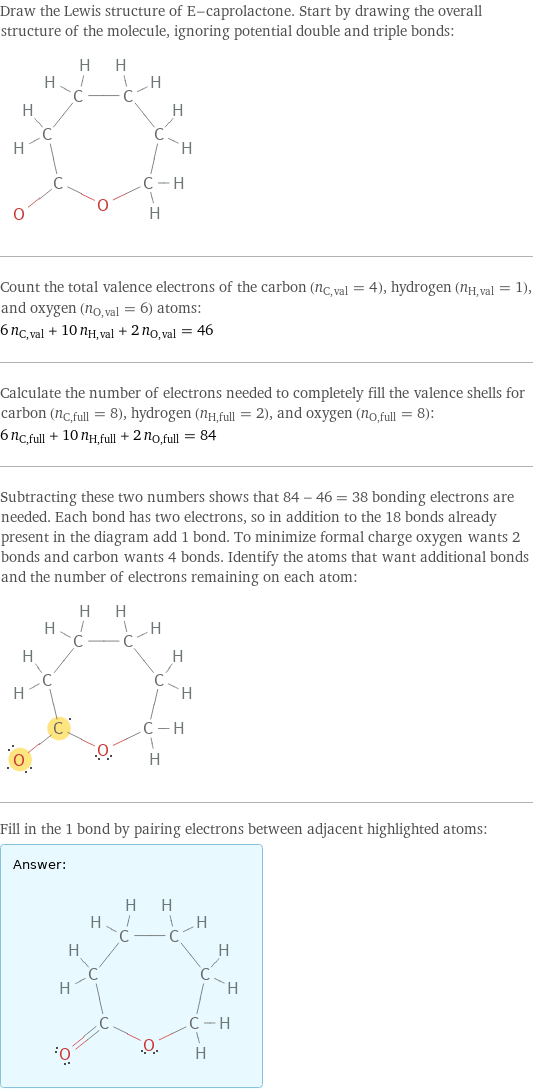
Draw the Lewis structure of E-caprolactone. Start by drawing the overall structure of the molecule, ignoring potential double and triple bonds: Count the total valence electrons of the carbon (n_C, val = 4), hydrogen (n_H, val = 1), and oxygen (n_O, val = 6) atoms: 6 n_C, val + 10 n_H, val + 2 n_O, val = 46 Calculate the number of electrons needed to completely fill the valence shells for carbon (n_C, full = 8), hydrogen (n_H, full = 2), and oxygen (n_O, full = 8): 6 n_C, full + 10 n_H, full + 2 n_O, full = 84 Subtracting these two numbers shows that 84 - 46 = 38 bonding electrons are needed. Each bond has two electrons, so in addition to the 18 bonds already present in the diagram add 1 bond. To minimize formal charge oxygen wants 2 bonds and carbon wants 4 bonds. Identify the atoms that want additional bonds and the number of electrons remaining on each atom: Fill in the 1 bond by pairing electrons between adjacent highlighted atoms: Answer: | |
3D structure
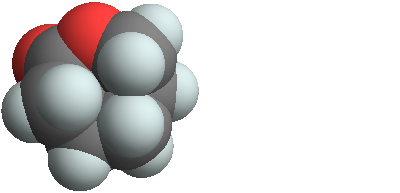
3D structure
Basic properties
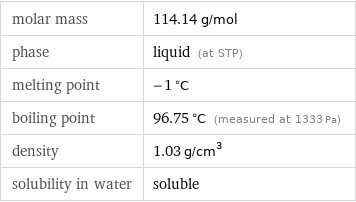
molar mass | 114.14 g/mol phase | liquid (at STP) melting point | -1 °C boiling point | 96.75 °C (measured at 1333 Pa) density | 1.03 g/cm^3 solubility in water | soluble
Units

Liquid properties (at STP)

density | 1.03 g/cm^3 vapor pressure | 0.009998 mmHg refractive index | 1.463
Units

Thermodynamic properties
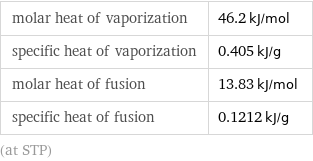
molar heat of vaporization | 46.2 kJ/mol specific heat of vaporization | 0.405 kJ/g molar heat of fusion | 13.83 kJ/mol specific heat of fusion | 0.1212 kJ/g (at STP)
Chemical identifiers
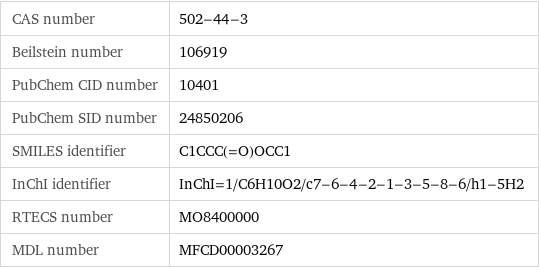
CAS number | 502-44-3 Beilstein number | 106919 PubChem CID number | 10401 PubChem SID number | 24850206 SMILES identifier | C1CCC(=O)OCC1 InChI identifier | InChI=1/C6H10O2/c7-6-4-2-1-3-5-8-6/h1-5H2 RTECS number | MO8400000 MDL number | MFCD00003267
Safety properties

flash point | 109.4 °C autoignition point | 338 °C upper explosive limit | 9.6% (concentration in air)

DOT hazard class | 3 DOT numbers | 1224
Toxicity properties

RTECS classes | mutagen